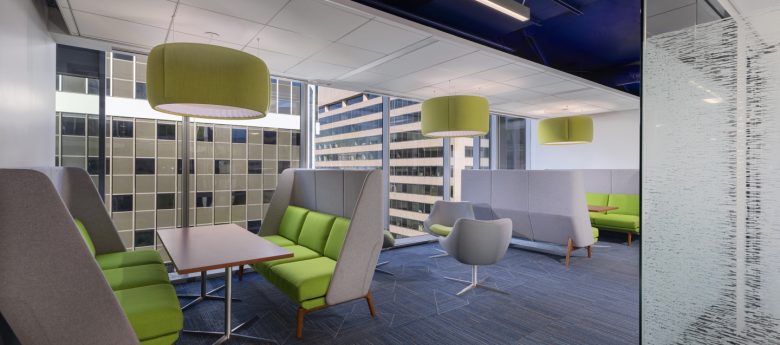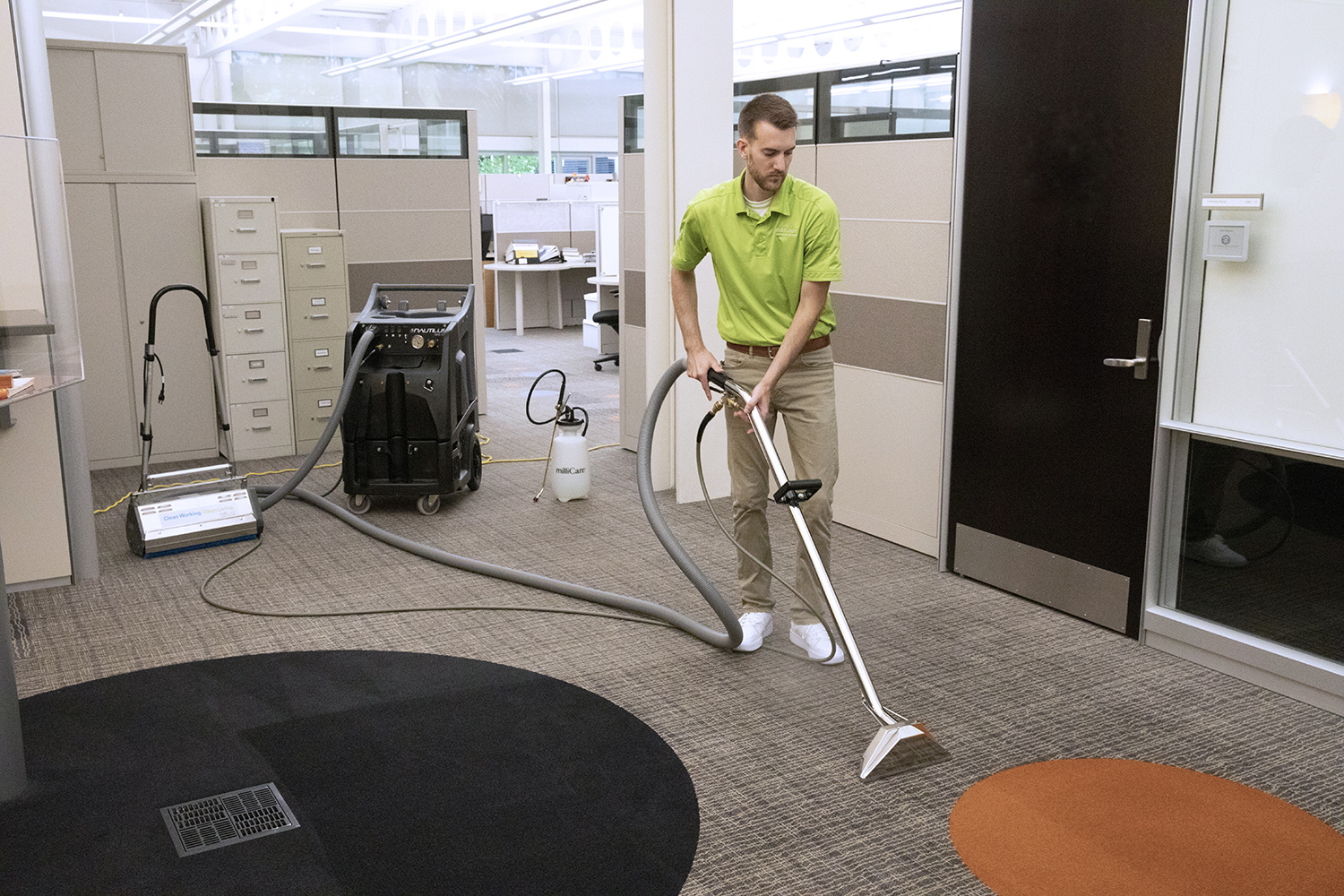Boost IAQ With Your Commercial Carpets

Indoor air quality, or IAQ, has become a major point of discussion when it comes to preventing the spread and intensity of aerosol transmissible diseases. A May 2021 New York Times article notes that room ventilation and air purification remain top-of-mind concerns globally, particularly in contained areas like offices. And a July 2021 report from STAT concurs and concludes that a lack of IAQ regulation and policy is a big problem in today’s world.
For facility managers, this means it’s time to take IAQ improvement measures into their own hands. Though it may sound like a daunting task, quickly improving IAQ doesn’t have to be complicated. It can start at the ground level with a focus on carpets.
The Connection Between Carpets and IAQ
In any setting, carpets can serve as enormous, efficient air filters. Bacteria, pollutants, and dust settle onto a carpet’s surface. Fibers then keep the unwanted particles from recirculating throughout the room. Other IAQ improvement techniques, such as living walls with indoor plants or air purification appliances, can perform more efficiently when clean carpets help filter debris out of the air.
Of course, carpets don’t work like magic when attracting and retaining dirt and debris. Unless they’re cleaned properly, carpets will fill up with soil and surpass their threshold. Additional soil will stay in the air. Facility managers need to put several best practices in place to ensure their carpets are filtering at the highest capacity possible:
Put a Premium on Dry Soil Removal
The fastest way to remove debris from any carpet is through dry soil removal, which is just a fancy term for vacuuming. A high-quality vacuum with serious suction and a beater bar will remove the majority of silicon sand in a dry carpet. Proper vacuuming frequency varies by the foot traffic of an area, but most high-traffic spots should be vacuumed at least once a day. Some exceptionally high-trafficked areas, such as busy hotels or retail stores, could even benefit from vacuuming every few hours. Lower-traffic areas are usually fine on a weekly vacuuming schedule.
Vacuuming won’t remove everything, which is why proper interim combined with restorative deep cleans are a necessity. Still, routine vacuuming as part of an overall maintenance program can go a long way toward enhancing IAQ.

Find a Rhythm of Interim and Restorative Cleans
Whether you should use interim or restorative cleaning methods and at what frequency has a great deal to do with your space, and every cleaning plan should be tailored to your specific needs. In general, however, facility managers can aim for a 3:1 ratio of interim cleans to restorative cleans as a frequency starting point.
For restorative cleans, make sure you’re not introducing more moisture to the carpet than necessary. Excessive moisture means higher humidity and potentially lower IAQ due to mildew and bacteria buildup, especially when improper drying techniques are used. Restorative cleans with systems that use dry polymers can get carpets clean without leaving them damp. Dry polymers are activated by a very small amount of water to grab onto particulate. Then, technicians vacuum the polymers away along with the soil. Choosing a dry-polymer cleaning method instead of hot-water extraction for restorative cleans will help ensure a low moisture environment and discourage microbe growth.
It’s important to avoid too much moisture when it comes to interim cleanings as well. Technicians can apply dry foam with a counter-rotating brush machine to limit the amount of water used. The counter-rotation lifts the pile, revealing and removing encapsulated soil. Once the pile is lifted, it can trap more airborne particles than before. Regular interim cleanings with foam extend the time between restorative cleaning with dry polymers without reducing the effectiveness of the carpet.
Cut Down on Incoming Soil With an Entry Mat System
Another way to prevent particle buildup in carpets is with an entry mat system. Install entry mats anywhere building occupants are likely to track soil to new areas. Entrances are an obvious spot, but also consider anywhere workers go from warehouse or industrial spaces to lobbies.
Other places to install entry mat systems can include high-soil areas, such as cafeterias and bathrooms. The more dirt and moisture the entry mat collects, the greater the filtering capacity of the building’s carpets because they stay clean longer. Of course, entry mats should be cleaned and maintained regularly to continue doing their job.
Spot Clean Carpets To Reduce Chemical Accumulation
Broad cleaning systems can seem like the most efficient way to clean large, carpeted areas quickly. However, chemicals in aerosol form from some broad cleaning systems can spread out and linger on carpet fibers. These can be harmful to building occupants to inhale and can also add moisture to a carpet, causing it to lose its luster and hindering its ability to improve IAQ.
Spot cleaning might take a little more time and focus than cleaning large areas at once, but it’s often the best choice for your occupant’s health and the longevity of your carpet. While it can’t replace restorative or interim cleanings, it can take care of problem areas on carpets between cleans. And with more thorough and frequent carpet maintenance, you can schedule fewer restorative cleans. When paired with systematic vacuuming, spot cleaning makes a huge difference in how well a carpet contributes to IAQ.
Facility managers today have a responsibility to help building occupants breathe easier. The good news is that improving the IAQ of commercial and industrial spaces can be quick, easy, and economical when you turn your focus toward your carpet.
Brian Miller is a business support specialist at milliCare Floor & Textile Care. In his role, he supports the company’s franchises and helps them improve their efficiency and productivity as they provide essential services to commercial facilities within their local markets.
